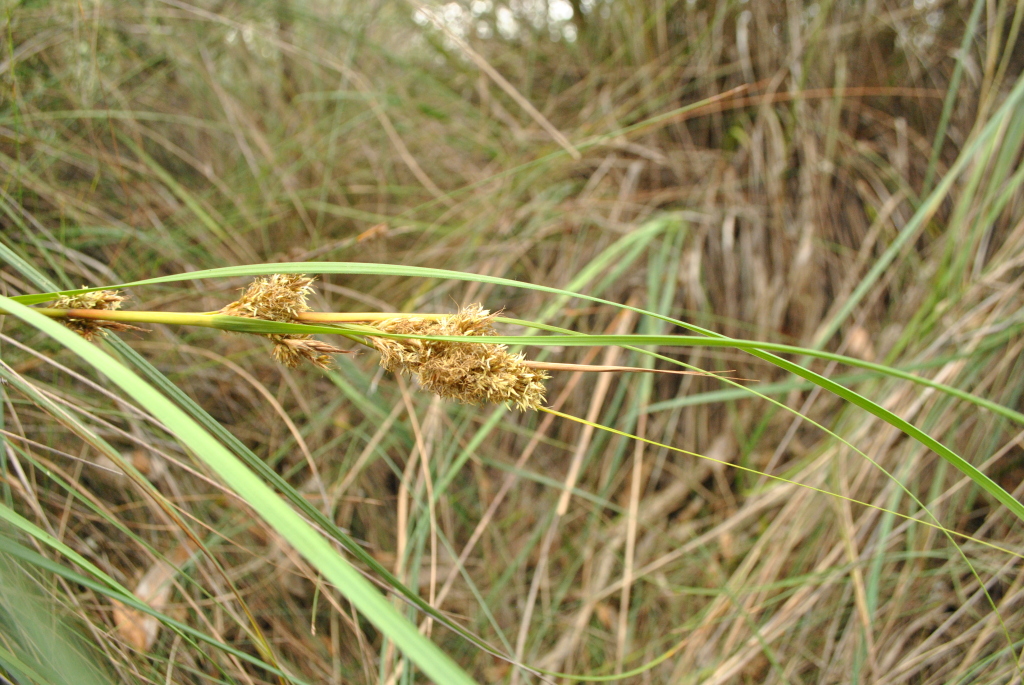Gahnia trifida
Labill Cutting SedgeTussock-forming perennial. Culms 55–100 cm high, c. 4 mm diam. Leaf-blades flat to inrolled, spreading, scabrous, longer than or equalling inflorescence; ligule narrow, chartaceous; sheath dark brown to black, dull. Inflorescence narrow, erect, 30–70 cm long, with 5–8 nodes. Spikelets 1(–2)-flowered; glumes 4–7, the 2 or 3 lowest shorter than the upper, scaberulous, with long- to short-mucronate apex; stamens 4–6; anthers 1.3–2 mm long excluding appendage 0.5 mm long. Nut oblong to narrow-obovoid, rarely to narrow-ellipsoid, trigonous, ± smooth, reticulate, shining, 2.0–2.6 mm long, 0.8–1.0 mm diam., grey to black (a thin white covering sloughs off with age). Flowers spring.
Wim, GleP, Brid, VVP, GipP, OtP, WaP, CVU, GGr, DunT, EGL, EGU, WPro, OtR, Strz. Also WA, SA, Tas. Typically fringing coastal saltmarsh communities, but occurring farther inland near saline and sub-saline lakes and watercourses.
Used to make 'straw' brooms in SA.
Wilson, K.L. (1994). Cyperaceae. In: Walsh, N.G.; Entwisle, T.J., Flora of Victoria Vol. 2, Ferns and Allied Plants, Conifers and Monocotyledons, pp. 238–356. Inkata Press, Melbourne.
 Spinning
Spinning


